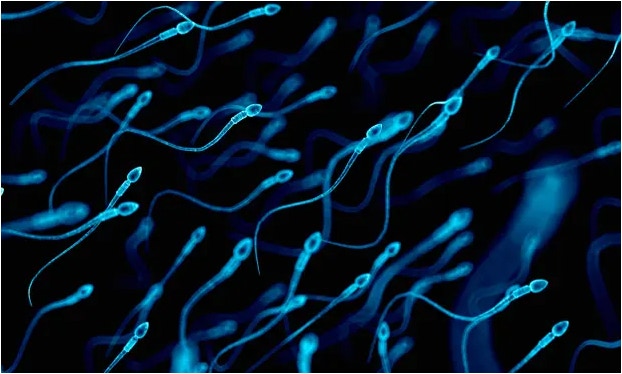PFAS
the beginning of the end
Followup Stories
Farms Polluted
PFAS In All Baby Umbillical Cord Blood
PFAS is probably going to end the human race. I always thought it would be the Bilderbergs launching a plague that would get rid of the 7 billion 500 million people they want to eliminate “to leave room for nature.”—Sherman
From
https://www.theguardian.com/commentisfree/2021/mar/18/toxic-chemicals-health-humanity-erin-brokovich
we read:
PFAS
By Erin Brockovich
in The Guardian writes:
The end of humankind? It may be coming sooner than we think, thanks to hormone-disrupting chemicals that are decimating fertility at an alarming rate around the globe. A new book called Countdown, by Shanna Swan, an environmental and reproductive epidemiologist at Icahn School of Medicine at Mount Sinai in New York, finds that sperm counts have dropped almost 60% since 1973. Following the trajectory we are on, Swan’s research suggests sperm counts could reach zero by 2045.
Zero.
Let that sink in. That would mean
- • no babies
- • no reproduction
- • no more humans.
Forgive me for asking: why isn’t the UN calling an emergency meeting on this right now?
The chemicals to blame for this crisis are found almost everywhere.
- • plastic containers
- • food wrapping
- • waterproof clothes
- • fragrances
- • cleaning products
- • soaps
- • shampoos
- • electronics
- • carpeting.
These chemicals, called PFAS† are known as “forever chemicals” because they don’t break down in the environment or the human body. It’s just like the DDT disaster Rachel Louise Carson wrote about in Silent Spring (1962) except now, humans are the victims instead of pelicans. PFAS just accumulates, doing more and more damage, minute by minute, hour by hour, day by day, year by year. Now, humanity is reaching a tipping point.
† Per FluoroAlkyl Substances and Poly FluoroAlkyl Substances
Swan’s book is staggering in its findings. “In some parts of the world, the average twenty something woman today is less fertile than her grandmother was at 35,” Swan writes. In addition to that, Swan finds that, on average, a man today will have half of the sperm his grandfather had.
“The current state of reproductive affairs can’t continue much longer without threatening human survival,” writes Swan, adding: “It’s a global existential crisis.”
That’s not hyperbole.
That’s just science.
As if this wasn’t terrifying enough, Swan’s research finds that these chemicals aren’t just dramatically reducing semen quality, they are also shrinking penis size and volume of men’s testes.
This is nothing short
of a full-scale emergency
for humanity.
From
https://www.theguardian.com/environment/2021/oct/17/us-epa-pfas-forever-chemicals-sites-data
we read:
An EPA list of facilities
makes it clear that virtually no part of the US
appears free from the risk
of air and water contamination by PFAS.
By
Carey Gillam and Alvin Chang
Sun 17 Oct 2021 05.00 EDT
The US Environmental Protection Agency (EPA) has identified more than 120,000 locations around the US where people may be exposed to a class of toxic “forever chemicals” associated with various cancers and other health problems.
120,000!
That is a frightening tally four times larger than previously reported, according to data obtained by the Guardian.
In this file photo taken on August 12, 2018 this illustration shows plastic containers, cutlery and plastic wrapped food packaging taken in a studio in Paris. Daily exposure to phthalates, a group of chemicals used in everything from plastic containers to makeup, may lead to approximately 100,000 deaths in older Americans annually, a study from New York University warned October 12, 2021.
Photo by Olivier MORIN / AFP
via Getty Images
The list of facilities makes it clear that virtually no part of America appears free from the potential risk of air and water contamination with the chemicals known as PFAS.
Colorado tops the EPA list with an estimated 21,400 facilities, followed by California’s 13,000 sites and Oklahoma with just under 12,000. The facilities on the list represent dozens of industrial sectors, including oil and gas work, mining, chemical manufacturing, plastics, waste management and landfill operations. Airports, fire training facilities and some military-related sites are also included.
The EPA describes its list as “facilities in industries that may be handling PFAS”. Most of the facilities are described as “active”, several thousand are listed as “inactive” and many others show no indication of such status. PFAS are often referred to as “forever chemicals” due to their longevity in the environment, thus even sites that are no longer actively discharging pollutants can still be a problem, according to the EPA.
The tally far exceeds a previous analysis that showed 29,900 industrial sites known or suspected of making or using the toxic chemicals.
People living near such facilities “are certain to be exposed, some at very high levels” to PFAS chemicals, said David Brown, a public health toxicologist and former director of environmental epidemiology at the Connecticut department of health.
Brown said he suspects there are far more sites than even those on the EPA list, posing long-term health risks for unsuspecting people who live near them.
“Once it’s in the environment it almost never breaks down,” Brown said of PFAS. “This is such a potent compound in terms of its toxicity and it tends to bioaccumulate … This is one of the compounds that persists forever.”
A Guardian analysis of the EPA data set shows that in Colorado, one county alone – Weld county – houses more than 8,000 potential PFAS handling sites, with 7,900 described as oil and gas operations. Oil and gas operations lead the list of industry sectors the EPA says may be handling PFAS chemicals, according to the Guardian analysis.
In July, a report by Physicians for Social Responsibility presented evidence that oil and gas companies have been using PFAS, or substances that can degrade into PFAS, in hydraulic fracturing (“fracking”), a technique used to extract natural gas or oil.
Water samples from Clover Flat landfill in Calistoga, California, have confirmed the presence of PFAS chemicals.
The EPA said in 2019 that it was compiling data to create a map of “known or potential PFAS contamination sources” to help “assess environmental trends in PFAS concentrations” and aid local authorities in oversight.
But no such map has yet been issued publicly.
The new data set shows a total count of 122,181 separate facilities after adjustments for duplications and errors in listed locations, and incorporation and analysis of additional EPA identifying information. The EPA facility list was provided to the Guardian by the non-profit Public Employees for Environmental Responsibility (Peer), which received it from the EPA through a Freedom of Information request. (Peer is currently representing four EPA scientists who have requested a federal inquiry into what they allege is an EPA practice of ignoring or covering up the risks of certain dangerous chemicals.)
“This shows how PFAS is permeating all industrial sectors,” said Peer’s executive director, Tim Whitehouse.
PFAS chemicals are a group of more than 5,000 man-made compounds used by a variety of industries since the 1940s for such things as electronics manufacturing, oil recovery, paints, fire-fighting foams, cleaning products and non-stick cookware. People can be exposed through contaminated drinking water, food and air, as well as contact with commercial products made with PFAS.
The EPA acknowledges there is “evidence that exposure to PFAS can cause adverse health outcomes in humans”. But the agency also says that there is only “very limited information” about human health risks for most of the chemicals within the group of PFAS chemicals.
EPA officials have started taking steps to get a grasp on the extent of PFAS use and existing and potential environmental contamination, as independent researchers say their own studies are finding reason for alarm. Last year, for instance, scientists at the non-profit Environmental Working Group issued a report finding that more than 200 million Americans could have PFAS in their drinking water at worrisome levels.
The EPA is expected to announce a broad new “action plan” addressing PFAS issues on Monday. The list of facilities handling PFAS is one part of the larger effort by the agency to “better understand and reduce the potential risks to human health and the environment caused by PFAS,” EPA deputy press secretary Tim Carroll told the Guardian.
“EPA has made addressing PFAS a top priority,” Carroll said. “Together we are identifying flexible and pragmatic approaches that will deliver critical public health protections.”
Linda Birnbaum, former director of the National Institute for Environmental Health Sciences and an expert on PFAS, said the EPA compilation of more than 120,000 facilities that may be handling PFAS and other recent moves shows the agency is taking the issue seriously, but more work is urgently needed.
“Unfortunately, where PFAS are used, there is often local contamination,” Birnbaum said. And while the EPA appears to be trying to get a handle on the extent of exposure concerns, progress “seems very slow”, she said.
The American Chemistry Council (ACC) asserts that PFAS concerns are overblown.
Major manufacturers have backed away from the PFOS and PFOA-related chemicals that research has shown to be hazardous, and other types of PFAS are not proven to be dangerous, according to the chemical industry organization. “PFAS are vital” to modern society, according to the ACC.
But public health and environmental groups, along with some members of Congress, say the risks posed to people by industrial use of PFAS substances are substantial.
Four US lawmakers led by Rosa DeLauro, chair of the House Committee on Appropriations, wrote to the EPA administrator, Michael Regan, on 6 October about their concerns regarding PFAS contamination of air and water from industrial facilities, saying: “For too many American families, this exposure is increasing their risk of cancer and other serious health problems.”
More than 150 advocacy groups also sent a letter to Regan calling for urgent action to address industrial discharges of PFAS chemicals, noting that many of the chemicals “have been linked at very low doses to serious health harms”.
One of the sites on the EPA list is the Clover Flat landfill in Calistoga, California, a small community in the Napa Valley area that is popular for its vineyards and wineries. The landfill sits on the northern edge of the valley atop the edge of a rugged mountain range.
Clover Flat has taken in household garbage, as well as commercial and industrial waste since the 1960s, but over time the landfill has also become a disposal site for debris from forest fires.
Though the EPA list does not specifically confirm Clover Flat is handling PFAS, the community has no doubt about the presence of the toxic chemicals. A May 2020 water sampling report requested by regional water quality control officials showed that PFAS chemicals were present in every single sample taken from groundwater and from the leachate liquid materials around the landfill. Care for a glass of wine? It’s from Napa . . . No thanks.
Close to 5,000 people live within a three-mile radius of the landfill, and many fear the PFAS and other toxins taken in by the landfill are making their way deep into the community.
Napa Valley resident Dennis Kelly lives downhill from the landfill and worries about contamination from the waste. Geoffrey Ellsworth, mayor of the small city of St Helena in Napa county, said multiple streams cross the landfill property, helping rains and erosion drive the chemical contaminants downhill into creeks and other water sources, including some used to irrigate farmland. He has been seeking regulatory intervention but has not been successful, he told the Guardian.
A small group of Napa Valley residents have been working on a documentary film about their concerns with the landfill, highlighting fears that exposures to PFAS and other contaminants are jeopardizing their health.
“The water is full of foam and looks soapy and smells funny,” said 69-year-old Dennis Kelly, who lives on a few acres downhill from Clover Flat. His dog Scarlett has become sick after wading through waters that drain from the landfill into a creek that runs through his property, Kelly said. And for the last few years he has suffered with colon and stomach cancer.
Kelly said he fears the water is toxic, and he has noticed the frogs and tadpoles that once populated the little creek are now nowhere to be found. “Pollution is going to be what kills us all,” Kelly said.
Farms Polluted
From
https://www.theguardian.com/environment/2022/may/08/us-cropland-may-be-contaminated-forever-chemicals-study
we read:
Forever Chemicals Have Polluted
20 Million Acres Of US Cropland
A farmer harvesting soybeans
on a farm near Waukegan, Illinois.
Photograph: Tannen Maury/EPA
Tom Perkins
Sun 8 May 2022 05.00 EDT
Last modified on Sun 8 May 2022 05.02 EDT
About 20m acres of cropland in the United States may already be contaminated from PFAS-tainted sewage sludge that has been used as fertilizer.
PFAS (Per- and PolyFluoroAlkyl Substances) are a class of about 9,000 compounds used to make products heat-, water- or stain-resistant. They are called “forever chemicals” because they don’t break down. Once inside a living being they remain, doing harm, forever.
PFAS has been linked to
- • cancer
- • thyroid disruption
- • liver problems
- • birth defects
- • immunosuppression
- • and more.
Dozens of industries use PFAS in thousands of consumer products, and often discharge the chemicals into the nation’s sewer system.
The analysis, conducted by the Environmental Working Group (EWG), is an attempt to understand the scope of cropland contamination stemming from sewage sludge, or biosolids. “Regulators” don’t require sludge to be tested for PFAS or closely track where its spread, and public health advocates warn the practice is poisoning the nation’s food supply.
“We don’t know the full scope of the contamination problem created by PFAS in sludge, and we may never know, because the EPA has not made it a priority for states and local governments to track, test or report on PFAS,” said Scott Faber, EWG’s legislative policy director.
This makes it perfectly clear (to me) that the EPA is NOT protecting the environment at all. The EPA staff should be fired and real Americans put in their places.
All sewage sludge is thought to contain the dangerous chemicals, and the compounds have recently been found to be contaminating
- • crops
- • cattle
- • water and
- • humans
on farms where biosolids were spread.
Sludge is a byproduct of the wastewater treatment process that’s a mix of human excrement and industrial waste, like PFAS, that’s discharged from industry’s pipes. Sludge disposal can be expensive so the waste management industry is increasingly repackaging it as “fertilizer” because excrement is rich in plant nutrients.
EWG found Ohio keeps the most precise records of any state, and sludge has been applied to 5% of its farmland since 2011. Extrapolating that across the rest of the country would mean about 20m acres are contaminated with at least some level of PFAS. Faber called the estimate “conservative.”
EPA records show over 19bn pounds of sludge has been used as fertilizer since 2016 in the 41 states where the agency tracks the amount of sludge that’s spread, but not the location. It’s estimated that 60% of the nation’s sludge is spread on cropland or other fields annually.
The consequences are evident in the only two states to consistently check sludge and farms for PFAS contamination. In Maine, PFAS-tainted fields have already forced several farms to shut down. The chemicals end up in crops and cattle, and the public health toll exacted by contaminated food in Maine is unknown. Meanwhile, the state is investigating about 700 more fields for PFAS pollution.
“There’s no easy way to shop around this problem,” Faber said. “We shouldn’t be using PFAS-contaminated sludge to grow food and feed for animals.”
Michigan faces a similar situation as it uncovers contaminated beef and farms, and growing evidence links sludge to public health problems and contaminated drinking water.
The health cost of using sludge outweighs the benefits, advocates say. Many have questioned the sense in spending billions of dollars to pull sludge out of water only to inject the substance into the nation’s food supply, and calls for a ban on the practice are growing louder.
“The EPA could today require treatment plants to test sludge for PFAS and warn farmers that they may be contaminating fields, but it has refused to do so,” Faber said.
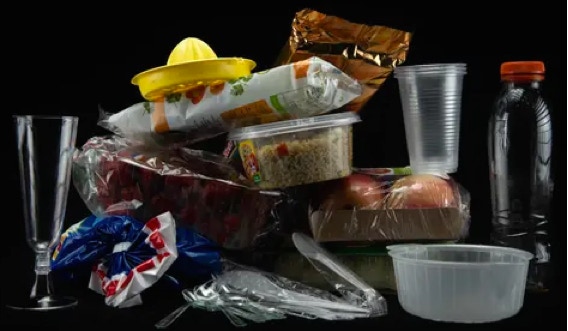
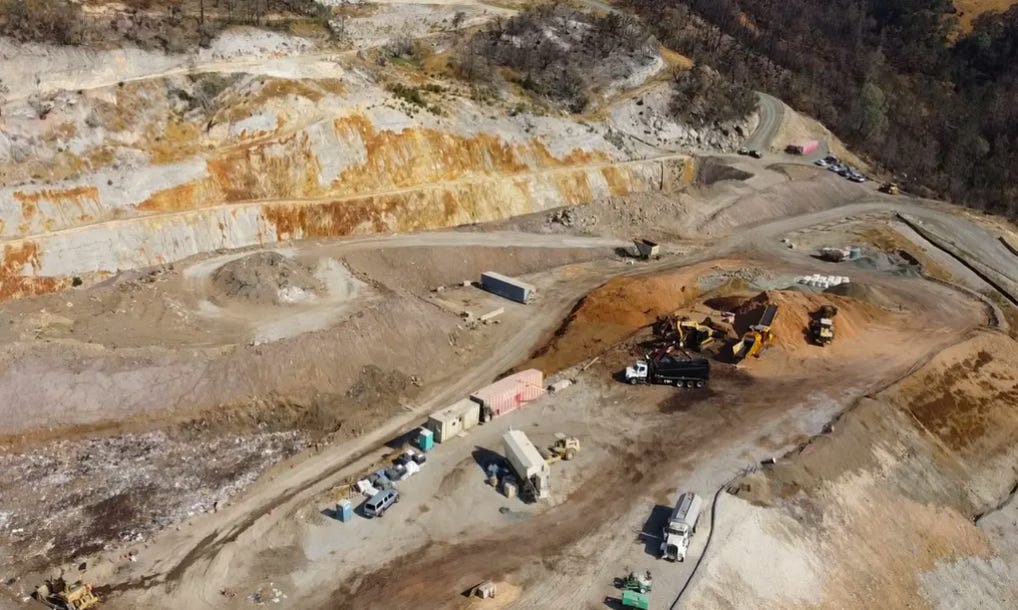
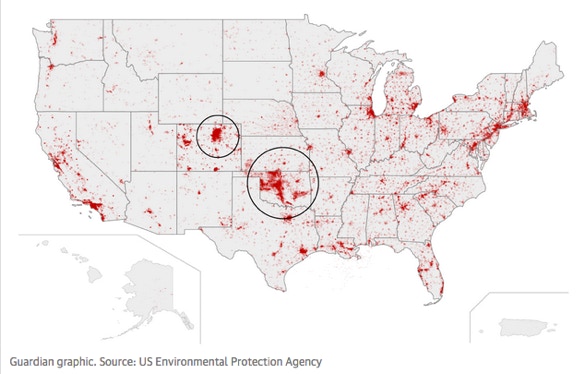


Forever Chemicals Detected In All
Umbilical Cord Blood In 40 Studies
Studies collectively examined nearly 30,000 samples over the past five years in ‘disturbing’ findings.
From
https://www.theguardian.com/environment/2022/sep/23/forever-chemicals-found-umbilical-cord-blood-samples-studies
Biobank, tube containing umbilical cord stem cells.
Photograph: Bsip Sa/Alamy
BY Tom Perkins
Fri 23 Sep 2022 07.00 EDT
Toxic PFAS chemicals were detected in every umbilical cord blood sample across 40 studies conducted over the last five years, a new review of scientific literature from around the world has found.
The studies collectively examined nearly 30,000 samples, and many linked fetal PFAS exposure to health complications in unborn babies, young children and later in life. The studies’ findings are “disturbing,” said Uloma Uche, an environmental health science fellow with the Environmental Working Group, which analyzed the peer-reviewed studies’ data.
“Even before you’ve come into the world, you’re already exposed to PFAS,” she said.
PFAS, or per- and polyfluoroalkyl substances, are a class of about 12,000 chemicals commonly used to make products resist water, stains and heat. They are called “forever chemicals” because they do not naturally break down, and accumulate in human bodies and the environment.
The federal government estimates that they are found in 98% of Americans’ blood. The chemicals are linked to birth defects, cancer, kidney disease, liver problems and other health issues, and the EPA recently found effectively no level of exposure to some kinds of PFAS in water is safe.
Humans are exposed to the ubiquitous chemicals via multiple routes. PFAS are estimated to be contaminating drinking water for over 200 million people in the US, and have been found at alarming levels in meat, fish, dairy, crops and processed foods. They are also in a range of everyday consumer products, like nonstick cookware, food packaging, waterproof clothing, stainguards like Scotchgard and some dental floss.
PFAS in products can be absorbed through the skin, swallowed or breathed in as they break off from products and move through the air.
“The presence of these chemicals is also a threat to pregnant people, serving as first contacts with PFAS before they can pass from the uterus to the developing fetus by way of the umbilical cord,” Uche said.
Scientists focused on umbilical cord blood because the cord is the lifeline between mother and baby. The findings are especially troubling because fetuses are “more vulnerable to these exposures because their developing bodies don’t have the mechanisms to deal with the chemicals,” Uche added.
The studies linked fetal exposure to higher total cholesterol and triglycerides in babies, and changes in their bodies’ bile acids, which can lead to a higher risk of cardiovascular problems later in life.
Some studies also associated cord blood exposure with disruptions to thyroid glands and microbial cells in the colon.
PFAS can remain in the body for years or even decades, and some studies link fetal exposure to effects throughout childhood and adulthood, including on cognitive function, reproductive function, changes in weight, eczema and altered glucose balance.
The studies identified about 35 different kinds of PFAS compounds, including some newer chemicals that industry and some regulators claim do not accumulate in the body. However, science is limited in the number of PFAS compounds it can detect in blood, so it is highly likely that many more of the chemicals passed on to fetuses.
EWG said the best protection is for women to avoid using products that contain PFAS and use reverse osmosis of granulated activated carbon filters that can filter the chemicals, if they are in a mother’s drinking water.
However, Uche said the findings underscore the need for the Environmental Protection Agency (EPA) and the Food and Drug Administration (FDA) to ban all non-essential uses of PFAS, establish limits for all PFAS compounds in drinking water, stop industrial discharges, and establish limits for PFAS in food.
Despite overwhelming evidence that all PFAS that have been studied are persistent in the environment and toxic, the FDA and EPA have so far resisted banning non-essential uses of the chemicals. The EPA last year rolled out a broad plan designed to rein in the chemicals use and limit exposures, but public health advocates say it falls far short of what the situation demands. It also largely focuses on four out of 12,000 PFAS compounds.
“I’m a mother of two. I have a seven- and three-year-old, and knowing that I could have exposed my children to PFAS is disturbing,” Uche said. “With this review we are telling the EPA and FDA to please take simple steps to reduce PFAS exposures, and to protect our children.”
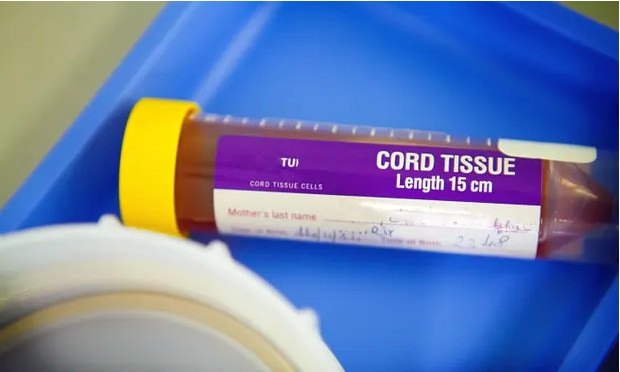
Low Sperm Count
10/5/2022
From
https://www.theguardian.com/society/2022/oct/05/pfas-sperm-count-mobility-testicle-development
we read
Study Links In Utero PFAS Exposure
To Low Sperm Count And Motility
PFAS, now found in nearly all umbilical cord blood around the world, interferes with hormones crucial to testicle development.
Human sperm cells
Photograph by Sebastian Kaulitzki
Science Photo Library, Getty Images
Science Photo Library RF
By Tom Perkins
Wed 5 Oct 2022
A new peer-reviewed Danish study finds that a mother’s exposure to toxic PFAS “forever chemicals” during early pregnancy can lead to lower sperm count and quality in the lives of her male children.
PFAS – perfluoroalkyl and polyfluoroalkyl substances – are known to disrupt hormones and fetal development, and future “reproductive capacity” is largely defined as testicles [do not] develop [properly] in utero during the first trimester of a pregnancy, said study co-author Sandra Søgaard Tøttenborg of the Copenhagen University hospital.
Burial mounds [were discovered] where one Maine farmer buried the cows that were poisoned by PFAS on his family farm. [It was feared that the PFAS would leach out and into the water table.] Polluters could pay billions in fines for PFAS cleanup under the new Biden plan.
“It makes sense that exposure to substances that mimic and interfere with the hormones involved in this delicate process can have consequences for semen quality later in life,” Søgaard Tøttenborg said.
PFAS are a class of about 12,000 chemicals typically used to make thousands of products resistant to water, stains and heat. They are called “forever chemicals” because they accumulate in humans and the environment and do not naturally break down.
A growing body of evidence links them to serious health problems such as cancer, birth defects, liver disease, kidney disease and decreased immunity.
The study, published on Wednesday in Environmental Health Perspectives, examined semen characteristics and reproductive hormones in 864 young Danish men born to women who provided blood samples during their pregnancies’ first trimesters between 1996 and 2002.
[The textile company] Saint-Gobain claims it did not hide its use of PFAS [even though] the information was [buried] in 90,000 [other] documents it released.
“They all knew.” Saint-Gobain misled regulators about use of toxic PFAS, documents [clearly] show.
This is the first [study] to look for exposure to more than two PFAS compounds
and to
assess exposure during early pregnancy,
which is the male reproductive organ’s “primary developmental period.”
[In this test,] researchers checked the mother’s blood for 15 PFAS compounds, and found seven in large enough concentrations to include in the study.
Those mothers with higher levels of exposure more frequently raised adult men with lower sperm counts, as well as elevated immotile sperm levels, meaning their sperm did not swim.
This exposure also increased the amount of non-progressive sperm – sperm that do not swim straight or swim in circles.
Both issues can lead to infertility.
The ubiquitous chemicals are estimated to be in 98% of Americans’ blood, and they can cross the placental barrier and accumulate in the growing fetus.
A recent analysis of 40 studies of umbilical cord blood from around the world found that PFAS was detected in all 30,000 samples.
Infertility rates are on the rise worldwide, often for unclear reasons, Søgaard Tøttenborg said.
Unclear? Unclear?
What do you mean “unclear?”
“The results of our studies are an important piece in that puzzle,” she added. “Equally important: the more we know, the more we can prevent.”
Huh? Prevent what?
Human reproduction
leading to extinction?
PFAS Found In Contact Lenses
From
https://www.theguardian.com/environment/2023/may/09/contact-lenses-pfas-forever-chemicals
Many soft contact lenses in the US are largely made up of compounds called fluoropolymers that are by definition PFAS “forever chemicals”, new research suggests.
Testing of 18 popular kinds of contact lenses found extremely high levels of organic fluorine, a marker of PFAS, in each.
“You could consider [the lenses] almost pure PFAS,” said Scott Belcher, a North Carolina State University researcher and scientific adviser on the contact lens testing.
PFAS are a class of about 14,000 chemicals typically used to make thousands of consumer products resist water, stains and heat. They are called “forever chemicals” because they do not naturally break down, and they are linked to cancer, fetal complications, liver disease, kidney disease, autoimmune disorders and other serious health issues.
The testing, commissioned by the Mamavation and Environmental Health News public health blogs and conducted at an Environmental Protection Agency-certified lab, looked for organic fluorine in lenses made by Acuvue, Alcon and Coopervision. It found the chemical at levels between 105 parts per million (ppm) to 20,700ppm.
The chemistry is complex and there may be some other ingredients in the lenses, but the readings suggest fluoropolymers. Fluoropolymer PFAS in this form are essentially a soft plastic material and are used for disposable, soft lenses because “they have the properties that your eyes want”, Belcher said.
“It wants to get oxygen and doesn’t want bacteria to grow like crazy, and it wants lenses to be smooth and comfortable,” he added.
It is difficult to say what kind of health impacts this level of eye exposure to the chemicals may have because no studies on how the eyes absorb PFAS from lenses have been done. However, PFAS are absorbed through the dermis and are highly mobile compounds, so it’s possible that eyes do absorb some level of the chemicals, though fluoropolymers are generally a less mobile kind of PFAS.
But PFAS also break down into different types of PFAS once in the environment, so it is possible that the polymers turn into dangerous forms of the chemicals once in the eye or contact packaging, but no studies have been done. Chinese researchers in 2020 linked high PFAS exposure to several eye diseases.
The three lenses with the highest amounts of organic fluorine were Alcon Air Optix (No Hydraglide) for Astigmatism (20,000ppm), Alcon Air Optix Colors with Smartshield Technology (20,700ppm) and Alcon Total30 Contact Lenses for Daily Wear (20,400ppm).
Among the lowest levels included Acuvue Oasys with Hydraclear Plus with UV Blocking (113ppm) and Alcon Dailies Total One-Day Water Gradient for Astigmatism (106ppm).
Coopervision, Alcon, and Johnson and Johnson, which owns Acuvue, did not immediately respond to requests for comment.
Companies rarely disclose when they use PFAS because the federal government allows them to claim it as a trade secret. The chemicals are also so widely used that they can be unintentionally added to products throughout the supply chain. Independent and academic researchers in recent years have found them in a range of products from toilet paper to plastic food containers to fruit juice.
Congress, the EPA, and the Food and Drug Administration have done little to curb the use of PFAS in products, and though some states have begun banning the chemicals’ use in cosmetics and other consumer goods, no state-level laws address contact lenses.
However, Maine recently passed a ban on all non-essential uses of PFAS that will go into effect in 2030, and the EU is considering a similar blanket restriction.
The use of PFAS in contact lenses, which are essentially a medical device, Blecher said, is a case study in the debate over what may or may not constitute an “essential use.”
There’s little that consumers can do to protect themselves beyond wearing glasses or having a conversation with their doctor about possible alternatives, Belcher said. He added that his contacts contain the chemicals but he has not made any changes since learning of the test results.
“There are alternatives that may have some downsides and upsides, but that’s a discussion to have with your doctor,” he said.
###
